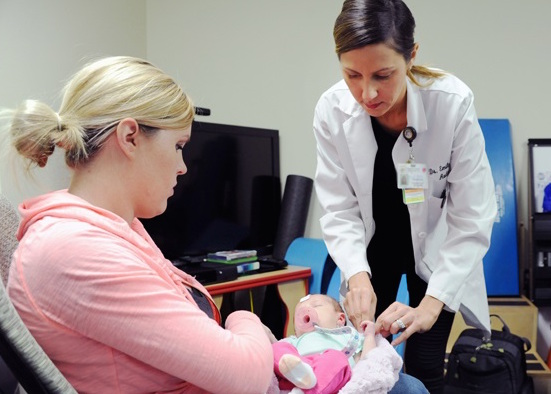
4 Organizations Doing Great Things for Mothers
Just because Mother’s Day has come and gone and Father’s Day is around the corner, we can’t lose sight of the many women who play the part of both parents at home. According to the 2016 census, 23% of families with children under 18 are single-mother households, and out of the 11 million single-parent households, 8.5 million of those are led by moms.
I know that balancing work and family can be difficult for any parent, but for single mothers trying to be there for their children while earning enough money to provide for her household, balancing both responsibilities is even more of a challenge.
Luckily, there are many nonprofits around the country that provide help and guidance for moms doing it all on their own. Here are four organizations that do everything they can to improve the lives of single moms on a local and national scale.
Women’s Banking Worldwide
For over 30 years, Women’s Banking Worldwide has helped millions of low-income women around the world gain access to the products and services they need to become financially literate, independent, and responsible. With a network of 49 financial institutions within 32 countries, Women’s Banking Worldwide develops means through which women can set up and use saving and checking accounts, receive health microinsurance as well as loans for their entrepreneurial endeavors. The organization’s ultimate goal is to give women the opportunity to build a financial safety net that is easy to use, convenient, and conducive to a successful economic future. And through conducting thorough market research, they are able to evolve their products and create new ones that fit the needs of women today.
National Partnership for Women & Families
Paid Family Leave is a hot topic and for a single working mother, having the ability to stay home and care for their sick child without having to dive into her savings account makes a big difference not just for the child, but for her as well. That’s just one of the many issues that National Partnership for Women & Families is fighting for. The organization is a heavy lifter when it comes to campaigning for more substantial health care coverage including workplace benefits like paid sick leave, eliminating the gender pay gap and ending discrimination against pregnant women and new moms in the office. With a team of policy experts and attorneys, the nonprofit goes directly to the government to improve the lives of women, children, and families.
Children’s Health Fund
No child should have to compromise their health because of their economic status and no mother should have to sit by and watch as her child stays sick because she can’t afford to pay for a visit to the doctor or take off time from work. That’s when Children’s Health Fund goes to work. With 53 mobile pediatric medical centers operating throughout the country serving 290,000 individuals each year, the Blue Busses bring the doctor’s office and the experts to the young patients. Children’s Health Fund also provides support to pregnant women and mothers through a group care program, giving mothers the opportunity to bond with other mothers while doctors provide checkups to their children from birth to 18 months. For single mothers, having the ability to form a support group outside of a traditional family structure can make everything much easier.
FEED
I wouldn’t be fulfilling my role of “proud mother” if I didn’t mention my daughter, Lauren Bush Lauren’s nonprofit FEED. In 2007, Lauren’s travels as a World Food Programme (WFP) Honorary Spokesperson led her to see the impact of malnutrition on a global scale. Determined to find a solution, she founded an organization dedicated to alleviating hunger in the United States, parts of Latin America, Africa, and the Middle East. Through the sale of specially designed (not to mention stylish) accessories like bags, jewelry, tees, and scarves, FEED is able to provide healthy and satisfying school meals, locally sourced ingredients, and crucial vitamins and micronutrient powders to households around the world. With a special focus on new mothers and mothers-to-be, Lauren’s organization keeps these women strong and energized so they can care for their families.
The important thing to remember is that if you’re a single mother, you’re not alone. There are organizations and individuals who have your back, even if you’ve never met them.
Cristo Rey Brooklyn: An Opportunity to Give Back!
|
Is NYC Behind in Sustainability?

When you think of “New York City”, what do you think of? Many would call the urban jungle an epicenter of culture, a pioneer for the global marketplace, and a champion of culinary achievement. But would any of us call New York City a leader in sustainability?
Think of the congestion of traffic at rush hour, the over-saturation of trash on the city streets, and the dearth of recycling initiatives. Compared to a more sustainable city like Tokyo (recently named the “Greenest City in Asia”), New York certainly has ground to cover before it’s considered eco-friendly.
At the same time, New York has launched and is launching a slew of initiatives to try to catch up. Let’s take a look at what is on the horizon for New York’s environmental movement, and how these programs are faring.
As New York resident, I’ve had the opportunity to experience several sustainable efforts NYC. Recently, I’ve been enjoying frequent school field trips to the Botanical Gardens, the Bronx Zoo, and even learned all there is about The River Project this past October.
Sustainable efforts are being taken all over the city. Just last November, the Hotel Association of New York City awarded seven NYC hotels for promoting and practicing sustainable hospitality initiatives. The NYC Department of Education not only talks the talk but walks the walk, aiming for zero waste by 2030 as well as promoting education awareness and management to schools.
It’s also on the forefront of the political scene. Achieving the status of “sustainable” has been on the agenda of government officials in New York for the last decade. Between former Mayor Bloomberg’s roll out of PlaNYC in 2007, Mayor de Blasio’s announcement of OneNYC in 2015, and recently Governor Cuomo’s host of the regional sustainable development conference this past September, we’ve seen a concerted effort from our governmental bodies.
But how are these efforts holding up? Let’s examine two of the biggest initiatives, PlaNYC and OneNYC.
The Initiatives
PlaNYC

Bloomberg’s plan to implement PlaNYC began in 2007, and focused on 10 areas of interest. Each area aimed to help environmentally sustain NYC for the projected surge of 1 million new residents by the year 2030.
Here are the 10 areas of interest:
- Housing and Neighborhoods
- Parks and Public Space
- Brownfields
- Waterways
- Water Supply
- Energy
- Transportation
- Air Quality
- Solid Waste
- Climate Change
The plan also called to reduce greenhouse gas emissions by 30% by 2030.
Several successful initiatives have come out of the plan. According to a 2011 PlaNYC update, 97% of the 127 proposed initiatives were accomplished in the first year, making it wildly successful in its execution.
One successful initiative, the renovation of Freshkills Park, the world’s former largest landfall in Staten Island, is projected to be three times the size of Central Park.
OneNYC

Eight years after the original PlaNYC, New York City Mayor de Blasio’s updated proposal, OneNYC encompasses four ‘visions’, one of them called “Our Sustainable City”. There are five main components with 30 initiatives in de Blasio’s sustainability vision:
- 80 x 50 (Greenhouse gas emissions from the city will be reduced 80% by 2050)
- Zero waste (sent to landfills by 2030)
- Air Quality
- Brownfields (putting to beneficial use vacant lots that are majority in low-income areas)
- Water Management
- Park & Natural Resources
De Blasio’s plan is more demanding than Bloomberg’s PlaNYC, but so far, it has been generally well received. That being said, it’s still in its early stages, so it’s still too early in the year to check up into the progress. However, according to nyc.gov: “Over the last year, the City has made significant progress toward OneNYC’s goals. In fact, over 95 percent of OneNYC’s 202 initiatives are already underway.”
It’s always good to see politicians successfully delivering on promises, but it hasn’t been all smooth sailing.
The critics
Not all of efforts made through Bloomberg’s PlaNYC were without criticism. In April 2008, Bloomberg submitted a costly proposal of congestion pricing, creating an $8 charge on cars entering the busiest part of Manhattan during peak hours. This was in an effort to discourage New Yorkers from contributing to car exhaust, but it was struck down in Albany. The overwhelming opposition came from a majority of NYC politicians calling those benefiting from the plan “elitists”. It’s unfortunate, as funds collected from congestion pricing would have gone towards supporting public transit availability and efficiency.
Many of the criticisms of de Blasio’s OneNYC focus on the program’s lack of executables. Critics wonder how he is going to achieve his lofty ambitions in a city as complex as New York. Environmental justice groups, such as New York City Environmental Justice Alliance, support the vision, but they also note that it “lacks a genuine engagement of community involvement” and needs more actionable details.
NYC’s future for sustainability
While New York might not be a paradigm of sustainability yet, these initiatives prove there is progress on the horizon. Support from government agencies, the Department of Education, and local businesses has put the city on the right track.
But, as the Environmental Justice Alliance points out, community involvement is always at the heart of these movements. It will take support from all New Yorkers in order to make a green NYC a reality.

The Empty Nest Syndrome is Not Just an Emotional Response
This article was originally posted on HuffingtonPost.com
Maybe all your children have left for college or left the family home for good to get married and build their own life. This is a big time of transition for many parents, and even more so for those who have always been very close to their children throughout their lives. It’s not uncommon to feel sad, anxious, and even depressed when your children leave. In fact, psychologists have a name for those feelings of loss you’re experiencing: Empty Nest Syndrome. Even though your children may be happy and in good health, busy moving on to the next chapter of their lives, you may be feeling anything but positive about the situation.
Is Empty Nest Syndrome Real?
In a nutshell, yes. Psychology Today defines it as, “feelings of depression, sadness and/or grief experienced by parents and caregivers after children come of age and leave their childhood homes.” In addition, parents with ‘boomerang kids’ — adult children between 25 and 34 years of age who are still living at home to save money or get back on their feet after a personal crisis — often experience the same symptoms.
The experts at Family Health Psychiatric & Counseling Center, Pc in Michigan point out that about 30% of the 78 million baby boomers in America are about to be ‘empty nesters’ and many will be looking for support to help them through this difficult time. In an interview for TheScope University of Utah Health Sciences Radio, Dr. Kyle Bradford Jones explains the duality of emotions many parents experience as their kids grow up and then leave. You’re obviously excited for your kids to be moving forward in life and experiencing new things but you’re also experiencing negative emotions like grief, loneliness, or even depression, explains Dr. Jones.
Symptoms of Empty Nest Syndrome
It’s normal to cry when your child leaves home and you may even find yourself feeling nostalgic when you see the child’s room or come across things or places that remind you of them. You might find it hard to watch your favorite shows you used to watch together as a family or you lose interest in cooking and daily activities since there’s no ‘family’ to cater to anymore. If you’re a single parent, the impact of having an empty home can be even more significant.
For many empty nesters, there is a noticeable grieving period and it may even feel like a death in the family. The Mayo Clinic emphasizes that this isn’t considered to be a medical condition but can be painful for many parents on several levels. Some of the symptoms of empty nest syndrome might include:
Random periods of sadness
– Crying episodes
– Difficulty sleeping or restlessness at night
– Feeling like you have lost your purpose
– Difficulty concentrating
– Not feeling like getting out of bed in the morning
– Depression
– Anxiety
Watching out for the signs of depression may be the most important thing when dealing with an empty nest. Depression can take its toll on your well-being and leave you stuck in a negative cycle. Seeking help early and even considering medication may help you get through this difficult time.
Benefits for Empty Nesters
While many parents can get hung up on the negative side of ‘losing’ their child and now living in an empty home, there are some benefits of this type of change in the household. Consider how having fewer people at home could reduce family conflicts. Married couples will have more quality time together and may be able to try new hobbies, spend more time with friends, or even travel. The pressure of having to take care of children — even adult children — is alleviated and parents can focus more on themselves.
Still, if you’re having a hard time coping with changes, you can seek some support from close friends or even a counselor. For many parents, parenting is part of their identity so saying goodbye to a child affects the parent at a much deeper level. Try and stay positive and focus on the new activities you can enjoy now that you have more time to be on your own. You can still make an effort to stay in touch with your children with regular visits, phone calls, and even video calls so it feels like they are still at home. Just recognizing that Empty Nest Syndrome is a very real thing can make it easier to cope and accept that this is just another chapter of your life.

4 Ways Parents Can Foster an Entrepreneurial Spirit in Their Daughters
When we think of raising our daughters to be entrepreneurs, we often think first of developing their money-smarts. And that’s important. No entrepreneur will be successful if they can’t develop, market, budget and invest in a savvy manner. But being an entrepreneur takes a certain mindset. A willingness to take calculated risk, the ability to know when to stick to your guns and when to change course, a love of brainstorming and the ability to understand what people want. That entrepreneurial mindset comes more easily to some kids (and adults) than others, but it’s a skill that can be encouraged, and it pays dividends in all areas of life.
Here are four ways we can help our daughters be entrepreneurs — not just in business, but in life:
1. Set the example.
Long before Melinda Gates became half of the Bill-and-Melinda-Gates powerhouse couple, she was Melinda French, one of four children growing up in a solidly middle-class family in Dallas. Education was key in the French household, and her parents, Ray and Elaine, were determined that all four children — sons and daughters — would attend college.
So Ray set up an entrepreneurship project on the side: operating rental properties. But it wasn’t just Ray and Elaine doing the work every weekend. The kids pitched in, too, on all aspects of the venture. They cleaned. They mowed grass. And they learned all about the financial end of the business, too.
“We would help him run the business and keep the books,” she told Fortune in 2008. “We saw money coming in and money going out.”
That fundamental equality, that requirement that all the children participate in all aspects of the business, laid the foundation for Gates as she went on to college at Duke University and then, eventually, when she herself became a parent.
As her first daughter got older, Gates told Fortune, she realized it was her turn to set the example. So Gates ramped up her involvement in the couple’s philanthropic foundation. “I really want her to have a voice, whatever she chooses to do,” she said of her daughter. “I need to role-model that for her.”
2. Break the mold.
Not every entrepreneur — surprisingly — is a natural at forging her own path. But that willingness to try, to adapt and to be persistent can be nurtured in our daughters.
When Indra Nooyi was a child in Madras, India, “there was a well-defined conservative stereotype,” she told Adi Ignatius of Harvard Business Review last year. But even within the boundaries of not embarrassing her parents, Nooyi stretched her wings — and her parents permitted it.
“Everything I did was breaking the framework” of 1950s and ’60s Indian society, she told HBR. “I played in a rock band. I climbed trees. I did stuff that made my parents wonder,’What the hell is she doing?’” But they didn’t hinder her exploration.
And in the process, she learned that she could not only hold her own, she could thrive.
Today, as president and CFO of PepsiCo, Nooyi continues that idiosyncratic exploration. She watches replays of Chicago Bulls games to study teamwork. She studied design with the late Steve Jobs of Apple, she told FastCompany.com, and adapted those lessons to PepsiCo products. She gives permission to — no, expects — those under her to find ways to adapt PepsiCo products to localized markets. And that leads us to …
3. Don’t hide your light.
Encourage your daughter to develop her unique point of view.
We often tell our daughters to “be yourself.” For years, that often wasn’t possible in the business world. But companies and, certainly, marketers, are finally discovering the benefit of listening to what half of the world’s population has to say. So tell your daughter: If you have an idea, share it. If you have a suggestion, speak up. If someone disagrees and you still feel your idea has merit, don’t abandon it.
PepsiCo’s Nooyi has many stories of the ways being a woman, and a business executive whose roots were outside America has given PepsiCo an edge. She has a sense of how some products and changes will be perceived outside the American framework. If she were trying to fit into the traditional “American businessman” mold, she’d lose what makes her unique — and she’d lose much of her influence.
Figure out what makes you unique, we must tell our daughters. Celebrate it, don’t apologize for it or diminish its importance. Once they have that confidence and that self-knowledge, they’ll have a set of qualities that sets them apart.
4. It’s OK to fail.
A dozen rejections for her first book. Unemployment. Divorce. A family member’s death. Welfare.
The early 1990s were not kind to J.K. Rowling.
Now, of course, she’s known as the mother of the Harry Potter universe. Her wealth has been compared to the Queen of England’s. But in interviews, Rowling well remembers what it was like to be labeled a failure when measured against what society calls “success.”
Our kids often feel pressure to “be perfect.” They don’t want to disappoint us, or fall out with friends, or be unpopular at school, so they stick with what they know: They may find it difficult to take chances.
It can be hard as parents to watch our daughters fail at something. We want to step in and smooth the path for them. But failure, Rowling says, can be freeing: If you’re self-motivated, it can clear life’s clutter and force you to focus on what you really want to do. She even titled her commencement address to Harvard’s Class of 2008, “The Fringe Benefits of Failure, and the Importance of Imagination.” “Rock bottom,” she said, “became the solid foundation on which I rebuilt my life.”
Show your daughter how to recover from failure. Demonstrate how to set a big goal, and then how to set milestones along the way to measure her progress. Help her figure out what lessons her failures are teaching her.
And remind her that, once she’s on the right path again, she should share that encouragement and experience with others.
This article was originally published on Entrepreneur.com
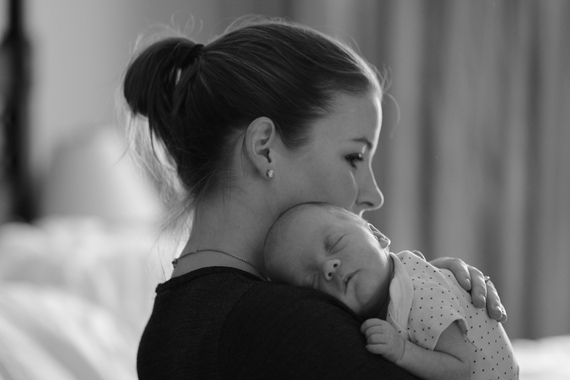
What Does Parenting Style Say About Parents?
According to psychologists, parents fall into one of four parenting styles — authoritative, uninvolved/neglectful, permissive, and authoritarian — that influence their children in dramatic ways. For instance, an uninvolved/neglectful parenting style can lead to a number of alarming consequences including children feeling lonely, having low self-esteem, and displaying a lack of self-control. In contrast, an authoritative parenting style is believed to be the most effective because children are guided by high expectations but receive ample support to develop independence. But as impactful as these parenting styles are on children, they also offer many potential insights into the personalities and upbringing of parents.
Most uninvolved/neglectful parents are not uninvolved on purpose. While experts agree that the results of uninvolved/neglectful parenting are extremely harmful, they also acknowledge that many parents who fall into this style do not intend to do so. Some parents simply do get caught up in their own lives and fail to pay much attention to their children. However, many uninvolved parents are often raised by uninvolved parents themselves, which leads to the perpetuation of the style because they had no other role models to learn from. Additionally, some parents may be uninvolved because they are dealing with overwhelming problems like depression or exhaustion from overworking and do not see how hands-off they’ve become with their children.
Permissive parents are not permissive because they are uninvolved or do not care. Permissive parents are extremely loving and often translate that love into friendship with their children. However, because they act like friends, permissive parents often fail to serve as strong parental figures that set rules or expectations. The few rules that permissive parents do set tend to be inconsistent. Rather than discipline their children, these parents tend to pacify their children with new toys or some other thing that they may desire. Though love and attention are abundant in this style of parenting, children of permissive parents may grow up having trouble with self-control or self-regulation. They may also be self-involved.
Authoritative parents are role models because their parents were role models to them. Parents with this style set high expectations for their children in order to teach them how to work independently and develop reasoning, which leads to children’s high self-esteem and self-confidence. Because parents set expectations, they also create rules, and children are disciplined fairly and consistently if the rules are broken. As part of a fair assessment of what sort of discipline to administer, these parents take many circumstances into account including the child’s general behavior. Their desire to encourage independence also makes authoritative parents flexible and opens them to listening to their children’s needs and wants. Authoritative parents usually display the same characteristics that they try to impart to their children and therefore serve as role models for them.
Authoritarian parents want the best for their children but have trouble letting them develop independently. Like authoritative parents, authoritarian parents set high expectations and create many rules. However, unlike authoritative parents, authoritarian parents are not very nurturing and do not provide much positive or educational feedback. Authoritarian parents also do not consider different variables when deciding on a punishment if their rules are broken. Discipline by these parents is usually harsh and not in proportion to the infraction. It is also given without much explanation for the reasons behind it. Finally, as suggested by the style’s name, authoritarian parents do not give children many choices or options.
Despite some potentially useful or telling information that may be gleaned about someone for his or her parenting style, this method of deduction has important limits. Someone’s parenting style may paint an incomplete picture of that person’s personality or upbringing because parenting styles are not set in stone. In many cases, they change over time, usually as parents enter different life stages of their children’s or their own lives. The same parent may also have a different style for each child, depending on that child’s specific needs or personality. Parenting styles can also change with some conscious effort from parents, so today’s permissive parent may be more authoritative tomorrow if he or she decides to work on changing certain behaviors.
This article was originally published on The Huffington Post

5 Ways Single Parents Can Prepare Their Kids for Back-to-School
Back-to-school season is in full swing and if you’re a single parent, it can be even more challenging to manage the anxiety, stress, and frustrations that come along with the change in schedule and adjusting to the new school year. Some kids look forward to going back to school while others will fight you to the front door each morning. However, there are some things you can do to make the transition back to school just a little smoother. Here are some ways you can get your kids ready for back-to-school season as a single parent:
1. Make Time for Breakfast
Getting three kids out of bed, dressed, and ready for the day can be one of your biggest challenges each morning and it’s easy to skip breakfast as a result. Make sure you plan for time at the kitchen table for a healthy breakfast so your kids have plenty of energy to get through their busy morning. Consider making breakfast before your kids get up so you have enough time to get things organized in the kitchen. If your kids are picky eaters, ask them what they want for breakfast the night before so there are no surprises and delays at the breakfast table. Making time for breakfast is also a great way to bond with your kids before they head out for the day.
2. Plan a Short Workout with the Kids
Working up a sweat together first thing in the morning can be a fun way to kick off the day. Exercising regularly is especially beneficial for kids who tend to stay indoors or are on the computer most of the day. Even though they may have play time and gym class at school, a quick 20 to 30-minute walk around the neighborhood or even a workout DVD that you can do together can be a great way to start the day. Exercise releases endorphins which can put everybody in a good mood and be consistent with your regimen will instill a healthy habit.
3. Keep Things Positive with a Pep Talk
When kids are feeling anxious, nervous, or agitated about school-related issues, be sure to address them during your quiet time together. Kids may need someone they can talk to about things they are going through at school so it’s important to make sure they know they can trust you in that time of need. Offer up a pep talk in the morning or spend some quality time with the kids after school so you can learn about any challenges they had during the day. Making time for your kids will help them adjust to any major changes. Helping them maintain a positive attitude and encouraging them to do their best will help them get through those stressful days with ease.
4. Set an Alarm Every Night
If you have a hard time staying on schedule to catch the school bus each morning or make it out the front door on time, get into a routine where you set the alarm for the same wake up time every night. Make it part of your turndown routine so everybody understands they need to be up at a certain time and lights go out at the same time. A consistent sleep routine will make those mornings a little smoother and also keep everyone in a positive mood — compromised sleep can cause fatigue during the day and make it difficult to stay positive.
5. Take Care of Back to School Shopping Early
Back to school shopping can be an event in itself and something that many parents don’t look forward to. The crowds, stores running out of back to school supplies, and the last-minute scramble to find some much-needed items on the shopping list can leave any parent burned out before the school year even begins. Be proactive and take care of back to school shopping at least three weeks before school starts. This way, you’ll have access to the full inventory of school supplies that stores are just bringing in and can even find many of these items online. Shopping online will save you a few trips to the store and also means everything will be shipped directly to your home at once. This can save you time and reduce stress.
Back to school season can be a stressful time of year — especially for single parents — but there are some things you can do to make the transition a little less frustrating for everyone. Planning a morning workout, giving your kids a pep talk, and taking care of back to school shopping early in the season are just a few ways to keep your kids happy, healthy, and motivated as the new school year unfolds.
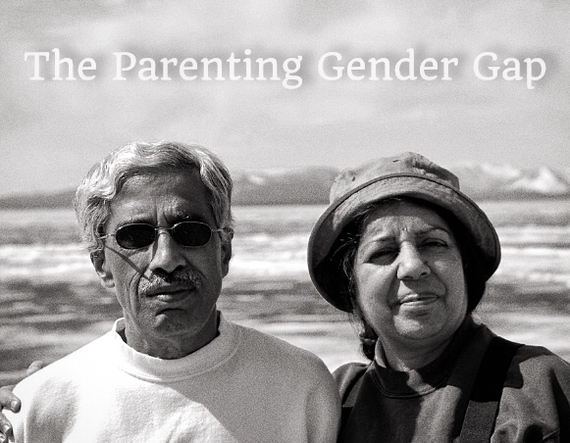
The Parenting Gender Gap: The Different Ways Men And Women Parent
Men are from Mars and women are from Venus, or so the saying goes. If that’s so, how do two interplanetary people co-parent children? Surely, their approaches to things like play and discipline will be different, informed not so much by the rules of the galaxy but the laws of biology and social conditioning.
Though gender roles aren’t always set in stone, it is true that men and women often bring different strengths, weaknesses and styles to the table when it comes to many things, parenting chief among them. This is important to take note of within couples, because the dynamic is ultimately shaping an infant into a grown person. When we understand how men and women parent differently, we can better understand what the child best responds to and how.
This won’t be the same with every partnership. But in general, it’s good to have different forces and priorities at work—it rounds out the child and provides an example on caretaking values. It may also inform their separate relationships with mom and dad.
Here’s several ways that men and women tend to differ when it comes to parenting, and why it matters for children.
Details vs. The Big Picture
According to author of Strong Fathers, Strong Daughters, Dr. Meg Meeker, “Dads approach parenting with different priorities than we mothers do. They tend to care less about dress, eating habits, and other details. Instead, dads tend to want to play with kids more and challenge them more, and this can help kids gain confidence.”
This might not always be true, but it does speak to the stereotypical strengths of men and women both personally and professionally. Women are known to be strong, detail-oriented multi-taskers, where men tend to dominate leadership roles, build morale, and think about parenting from a big picture perspective.
This may be why moms focus on the everyday details, like scheduling and chores, while dads act as both buddies and authoritarians — roles that build character and confidence.
Competition vs. Equity
Dads and moms play differently too, and the ways the play differs may have to do with the values men and women tend to cherish. One example, posed by Glenn Stanton in his book Why Children Need a Male and Female Parent, is the dichotomy of lessons imparted by men and women through play. Fathers emphasize competition, while mothers emphasize equity. Both are important, and one without the other, Stanton argues, could be unhealthy in the long run for a child.
The competition and equity equation further sheds light on how experience shapes parenting. Men, who are taught to be competitive and take risks, teach their kids (both male and female) to take risks too. Women are taught to protect themselves and treat others fairly, and pass this lesson on to children for safety reasons. With these two perspectives combined, kids can learn to be be competitive but fair, and take risks while understanding consequences.
Nurture vs Discipline
Both mothers and fathers are capable of being strict disciplinarians, but it perhaps comes more naturally to the father, if only because mom is the chief nurturer. Cautious mothers prioritize comfort and security for their kids, and are sometimes viewed by dads as being “too soft” on children. In these cases it may fall upon the dad to enact law and order in the family.
This becomes more apparent as kids get older and into their teenage years. A mom may be more inclined to be the “peacemaker” when things go awry, while dads are more intent on teaching a lesson than making the conflict disappear.
The roles could easily be reversed, however, if dad was taking on mom’s responsibilities as the main caretaker, which is increasingly common. Whatever the case, parents need to support one another and provide their children a balance between support and discipline.
Emotion vs Detachment
Ideally, mothers and fathers love their children equally. But generally speaking a woman’s emotional attachment to her kids is stronger, or at least more apparent, than a father’s may be. This has a lot to do with the high expectations moms are held to as opposed to dads, who are relegated to a supportive role. As a result, moms that stay at home can feel emotional and overworked, while working moms feel guilty for not being home. Whatever the case, it’s difficult for mom to detach, or separate work from home.
This dichotomy between emotion and detachment is also apparent in the ways men and women tend to communicate with their kids and each other. Fathers are more brief and to the point, while moms tend to dig deeper. This doesn’t mean that moms are over-involved and dads under-involved, just that a parent’s experience and role in the family is likely to affect his or her ability to detach. Ideally, fathers could take some of the emotional weight off of moms, and moms would encourage this when given a chance to step back.
This article was originally published on HuffingtonPost Blog.

Parenting No-Nos: Are You Guilty of These Missteps?
Parenting is a lifelong commitment — and a challenging one at that. Back when I first became a mom, I remember thinking how my kids should have come with instructions, a kind of step-by-step parenting guide to follow. Parents-to-be can prepare all they want, but raising children, I discovered, is mostly learned on-the-job. There is no special formula to follow if you want to be a good parent.
As parents, we’re bound to have missteps, being the humans that we are. And amid the day-to-day grind of keeping your kids healthy, happy, and safe, we all err here and there. Below I discuss counterproductive behaviors that parents engage in (often without realizing it).
Corporal Punishment
Hitting your kid is never, ever acceptable. As far as punishments go, spanking is not effective. Period. It’s worthwhile to mention: being physical in your anger can be destructive, too, even if you are not directly hitting another person. Throwing objects and slamming doors fall into this category. Children emulate what their parents do, so try to avoid engaging any kind of gesture that teaches kids to express frustration in a physical manner.
Making Them Eat Food They Don’t Like
Nearly every parent—myself included—can relate to the challenge that is finding nutritious foods for your kids to enjoy. It’s important to keep in mind that being fussy (or picky, even) is a normal part of human development. My recommendation? Don’t act agitated when your kid refuses to taste a new food. Kids are impressionable; the eating patterns they establish during their early years will continue to influence their relationship to food in the future. Treat family mealtimes as pleasant gatherings. Enjoy your dinners together!
Invalidating Their Feelings and Emotions
All too often, I’ve witnessed loving parents (who have the best of intentions) invalidate their son or daughter’s emotional experiences. In these situations, I’ve learned that the parents were invalidated as children by their parents, and the behavior is really habitual. It’s crucial to remember: however young they are, children are still humans. Like adults, they are entitled to feel whatever they are feeling. Here are a few examples of emotional invalidation:
Telling someone that (s)he is overreacting or being too “dramatic.”
Saying “there’s no reason to be upset” or “that’s nothing to cry over.”
Telling someone that the way they feel is “ridiculous” or “absurd,” etc.
Although these sorts of responses to kids’ emotions are extremely common and well-intentioned, they can be very damaging to a child’s emotional development. Sometimes I need to remind myself that my child is an individual person; he or she shouldn’t feel a certain way just because I feel that way.
Complaining About Your Kid’s Other Parent, In Front of Your Kid
Your relationship with your child’s mother or father is exactly that: yours. Don’t involve your kids in your personal relationships. Never bash your kid’s other parent in front of your kid. Arguing in the vicinity of your toddler or teen can contribute to unnecessary stress and anxiety. This applies to all families, though the issue is more common among divorced parents.
“Oversharenting”
A University of Michigan poll has shown that the majority of U.S. parents know at least one mom or dad who is guilty of so-called “oversharenting” – sharing embarrassing photos or tales of their kids via social media. Your kids, however young and immature, are entitled to privacy. They won’t always be babies! Uncertain where the boundary is? A good rule of thumb to follow: if you wouldn’t talk to a casual acquaintance about your son’s bedwetting, don’t post about it on Facebook, either. “We have of course gotten used to mommy bloggers embarrassing their children,” says Slate’s Hanna Rosin. Rosin’s observation accurately describes the reality of our social media landscape.
Checking Your Phone (and other screen addictions)
Put down your phone! I know…we’re all guilty of this one. When you are spending time with your children, spend time with your children. If you are watching your daughter’s soccer game, actually watch her soccer game. Your kids can tell if you’re not really listening or paying attention. Don’t prioritize Facebook, work-related emails, and the like over your children. Put away digital distractions when you’re hanging out with your kids. They deserve your undivided attention.
As I mentioned earlier, there will always be missteps. We’re humans first, parents a close second. I’d love to say that loving your children is as good as a how-to manual – it isn’t. But loving your child is the first crucial step in creating your very own child how-tos and how-not-tos. At least it was for me.
This article was originally published on HuffingtonPost Blog.

What If the Most Powerful People In Business Were Women?
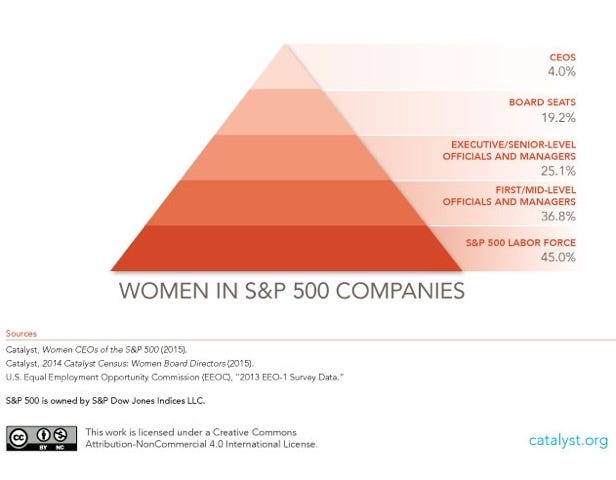
Since 1995, women in big decision roles in large companies have netted minimal gains in closing the gender gap. As of June 2015, only five percent of Fortune 500 companies were led by women, which in hard numbers is a whopping 24 female CEOs — the number has since dropped to 22. Not to mention women still make 78 percent less than men.
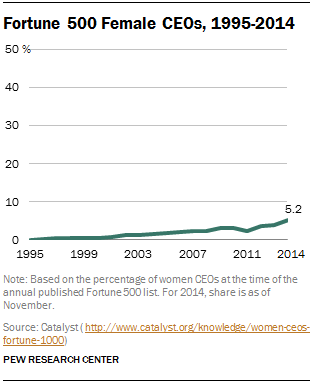
When I wonder what the world of business and philanthropy would look like if even 50 percent of big companies had female leadership, it’s the subtle differences that are most striking. In order to talk about gender discrepancy, it’s hard to discount innate gender distinctions. What would women bring to the table if they were 95 instead of five percent of the Fortune 500 landscape? A lot.
For one, United States non-profit Catalyst.org found that women make better entrepreneurs. Their 2011 report saw a 26 percent high return on invested capital (ROIC) in top companies with 19–44 percent women leaders and no women directors in the bottom. What that means is that companies with female entrepreneurs performed extremely well in generating revenue. This figure is even more impressive with women in the tech space who founded their own startups. Data from First Round Capital reported that “[…] startup teams with at least one female founder performed 63 percent better than all male teams. The data also showed that women are present in the top ranks of their ten most valuable companies.”
Not only do female entrepreneurs prove savvy at raising ROIC, women are doing it at ages over and under 50 Another win for women? A Gallup reportreveals that women are better at communicating and fostering loyalty in their employees.
“This [report] suggests that female managers likely surpass their male counterparts in cultivating potential in others and helping to define a bright future for their employees.”
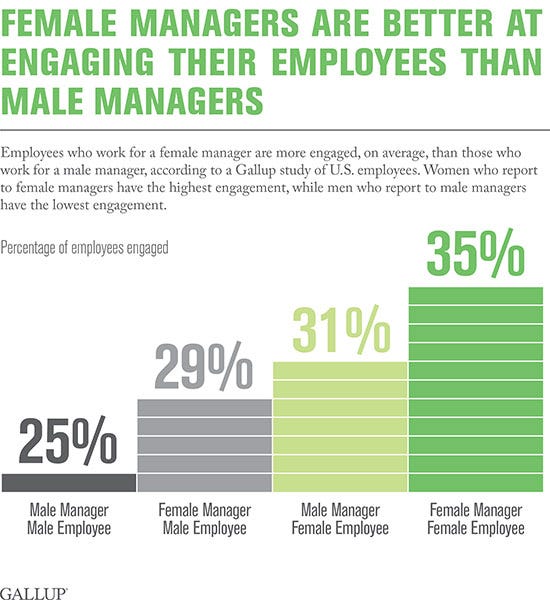
But what should make female leaders higher in demand is their ability to meet the challenges inside and outside the boardroom. They stay mindful of societal challenges.
According to a Forbes article by Geri Stengel, women entrepreneurs are more socially responsible than their male counterparts. Says Stengel, “Successful women are more likely than successful men to own a business so they can pursue a personal passion and to make a positive impact on the world.” And the ability to see the need for charity and philanthropic may be gender specific.
Research by WPI’s 2010 Women Give study shows households with single females gave 57 percent more than households with single males, and when women donated, they tended to donate more than men. I think it’s safe to say that women are more philanthropic than men. It’s a sentiment that would most likely carry over to more conscientious business practices.
I admit, I am an idealist, but I am also a pragmatist. It will take a lot of pushing on our parts to take — not wait to be offered — our places in positions of power. Truth is, women don’t ask for promotions or negotiate for higher salaries, which is not surprising as women are more likely to come down with Impostor Syndrome. According to a recent Telegraph article, even women who are already at the top of their fields think they’re frauds:
It doesn’t matter who you are, imposter syndrome can strike at any time — and, paradoxically, it affects some of the world’s most celebrated women. Facebook’s chief operating officer Sheryl Sandberg has said: ‘‘There are still days when I wake up feeling like a fraud, not sure I should be where I am.’’
The actress and UN ambassador Emma Watson has repeatedly admitted she feels like an imposter, as have Kate Winslet, Renée Zellweger and Maya Angelou.
I’d love to see women at the helm of most projects. I think we have even more to offer than these statistics reveal. We are worth more than we give ourselves credit for.
With only five percent of women in top positions, we have a long way to go to even get to fifty percent. But in a world where there would be better entrepreneurs, better managers, better philanthropists and a highly adept group of people generating revenue back into Fortune 500 companies — a world of female CEOs looks pretty perfect.
This post was originally published on Entrepreneur.com

Sharon Bush is an accomplished philanthropist who has worked for nearly four decades to bring resources to underprivileged women, children and families around the world. Her altruism and business acumen have had a powerful results, and many global organizations have recognized her humanitarian efforts with awards and accolades.



